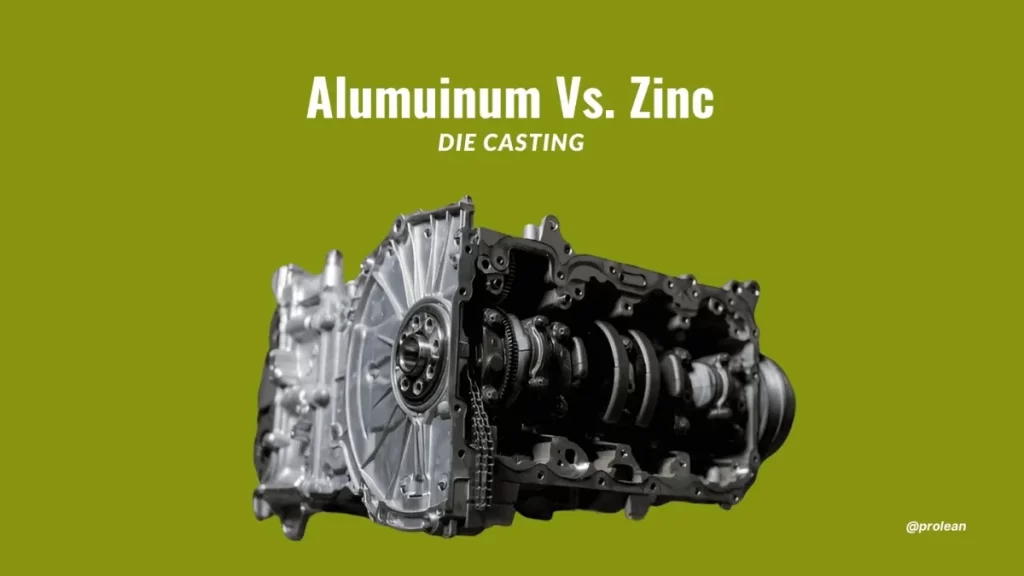
Aluminum Vs Zinc Die Casting
When you start a metal casting project, material choice comes first. The right metal dictates performance, durability, and even decides project cost. It’s a big decision, and not always an easy one. You’re often choosing between cast aluminum vs cast iron.
At first sight, both materials look strong and a dependable choice. But they serve different purposes. Cast aluminum gives more flexibility and lower weight. In contrast, cast iron offers strength and thermal stability. The wrong choice could mar your results and raise your costs.
That’s why we made this guide to make the choice simple. You’ll see clear comparisons, real-time applications, and direct impacts. We won’t use vague terms or long technical detours. Instead, we’ll focus on what you need to know, as fast as possible.
You’ll understand how each material behaves under pressure. The goal is simple: help pick the metal between cast iron versus cast aluminum that fits your needs. This isn’t just theory, it’s practical, project-driven insight.
So let’s break it down. You’ll walk away knowing what to use and why.
An Introduction To Cast Aluminum
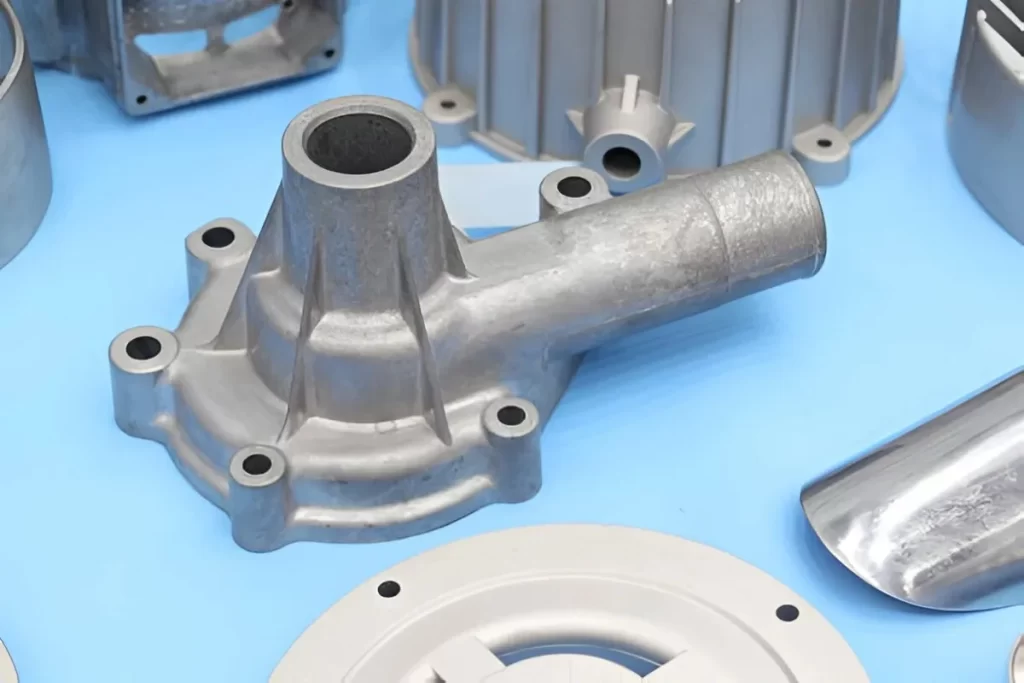
High Pressure Die Casting Part for Automotive
When doing precise work, cast aluminum material is easy to spot. The aluminium die casting process allows you to shape complex parts without increasing weight. It is usually used in cars, aircraft, and consumer electronics, since weight and heat play significant roles in this domain.
Aluminium is strong and can be cast in many forms without requiring additional machines. Moreover, due to having fewer restrictions than other metals, it provides better control over the production process.
How Cast Aluminum Is Made?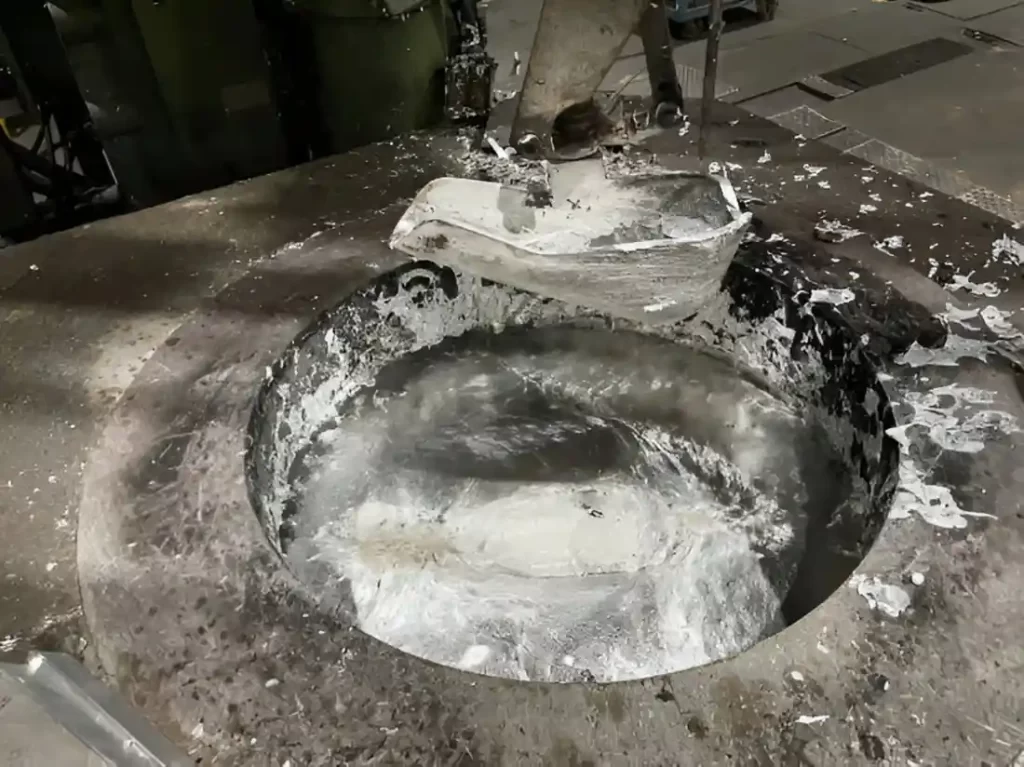
Aluminum Melting Furnace
Cast aluminum is made by melting the aluminum and then molding it into the desired shape. It is heated up to a temperature of 660°C. After melting, you place it in a mold. While the metal is cooling, it adopts the exact form of the cavity. With this practice, you can create parts with excellent detail.
Slender walls, empty areas, and detailed surfaces can be made with die-cast aluminium. It is advantageous when you need a powerful and precisely shaped part. That’s the reason various manufacturing industries use it.
There are fewer steps to take after the casting stage. It eliminates unnecessary waste, saves energy, and lessens the time to finalize a process. This casting is made for modern factories that require a lot of parts with minimal turnover.
Key Features That Set Cast Aluminum Apart
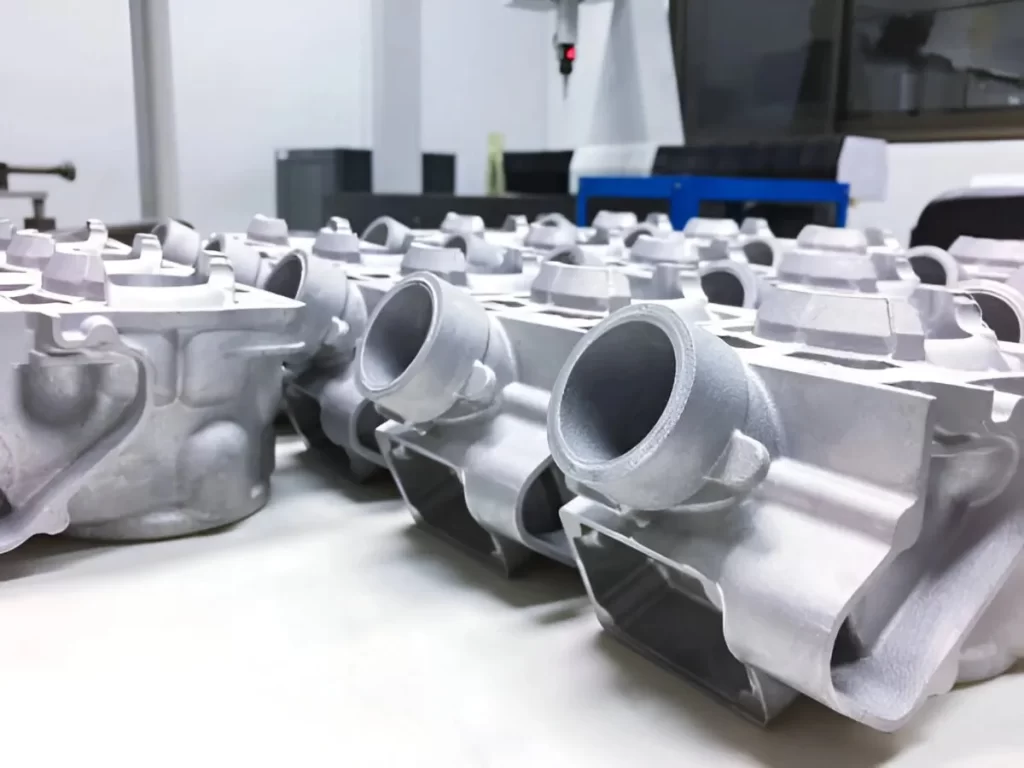
Inspection dimension aluminum automotive parts
Among other types of casting, aluminum casting remains prominent. Here are the key properties that make it a preferred choice in different industries.
Strong Thermal Conductivity
If quick heating is important for your application, cast aluminum is a good choice. Its thermal conductivity ranges from 120 to 160 W/m·K, which is significantly higher than that of cast iron.
Therefore, cast aluminum works well in engines, heat exchangers, and electronics. You may count on it for applications where heat-affected equipment can be problematic. It is responsible for more than conducting; it also keeps your system running efficiently.
Corrosion Resistance That Heals Itself
Industries pick cast aluminum partially because it is resistant to corrosion. As soon as metal is exposed to air, it develops an oxide layer coating. The layer shields the metal from intense oxidation.
When the outer layer gets scratched, another thin layer of oxide grows in a short time. As a result, fewer failures occur during hard use, and it requires less maintenance. You do not need to apply a layer of sealer or finishing coat continually.
High Strength-to-Weight Ratio
You can use cast aluminium for a project that needs strong and light materials. Despite its light weight, it offers plenty of strength and firmness. For this reason, such material is applied to aircraft, transport devices, and machinery frames.
It increases the fuel efficiency and improves the vehicle’s engine. You are helping rather than damaging the bike’s material. The strength, integrated with the weight, gives your system combined benefits.
Excellent Castability for Complex Designs
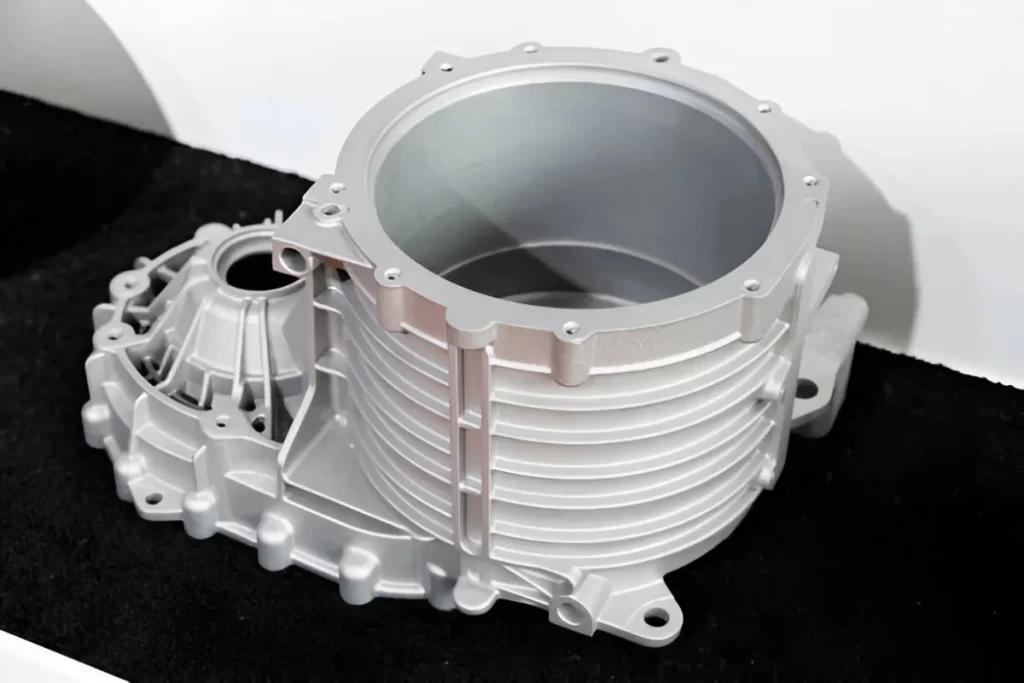
Automotive Engine Cover
Cast aluminum can easily be formed into complicated items. Since metal is pliable when melted, you can produce parts with sharp outlines and thin features.
Additionally, it requires less welding, cutting, and work after production. If you need cavities, a rib, or a handle with varying thickness, cast aluminum can handle it.
Non-Magnetic and Electronics-Friendly
Magnetism causes interference in many parts of electronics and sensitive devices. Settling for aluminum allows designers to avoid using magnets. Since magnetic fields do not influence it, nearby signals or circuit parts will not be affected.
It also prevents ferromagnetic particles from sticking to the surface and eventually corroding it. It also suits medical devices, cases, and precision tools because it works superbly in those areas. They are dependable and can last longer in delicate systems.
Try Prolean Now!
Cast Aluminum: Benefits That Make It a Smart Choice
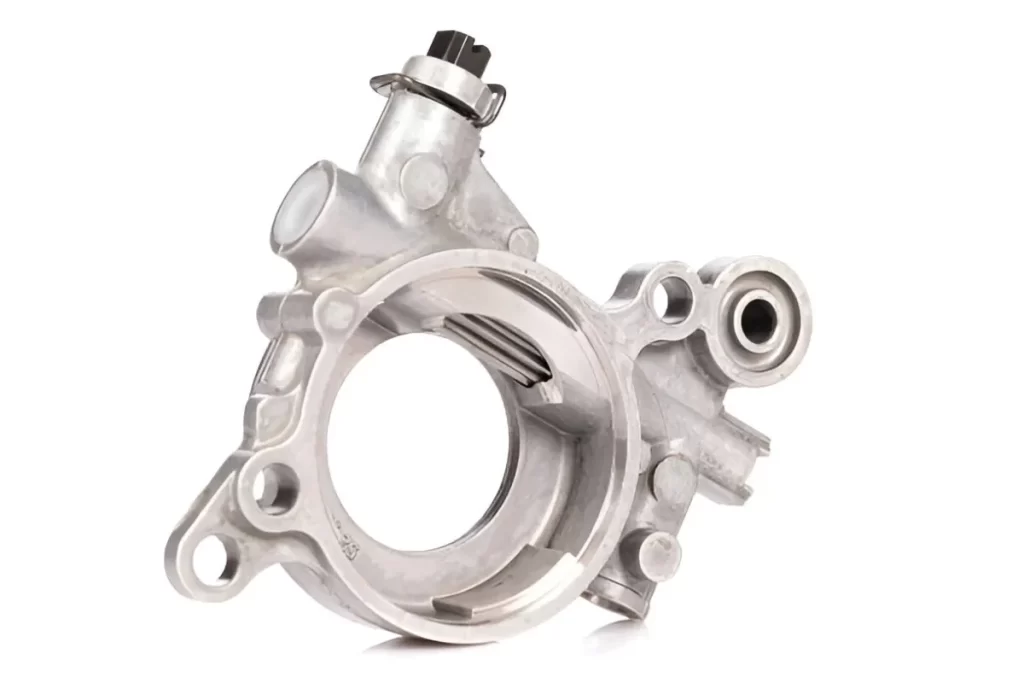
Aluminum Modern Oil Pump For a Chainsaw
Cast aluminum can be trusted for use in numerous industrial fields. It offers several benefits and is a good pick.
Fully Recyclable
Cast aluminum can be recycled without becoming weaker. This allows manufacturers to support sustainability when making their products.
Weighs Low but is durable.
Aluminum is much lighter compared to other commonly used metals. Even though it is strong and durable enough for use in lightweight areas.
Wide Range of Finishing Options
Applying a finish to cast aluminum is an easier process. It is possible to paint, anodize, or polish it, and each treatment works efficiently on this material.
Stable Under Temperature Fluctuations
Cast aluminum is capable of carrying heat and electricity well. Therefore, you can find it in heat exchangers, electronic devices, and electrical enclosures.
Low Maintenance
When aluminum parts are being operated, they require very little care. These are not affected by rust or corrosion, so it does not require frequent repairs and care. (Read more about investment casting)
Where Cast Aluminum Falls Short
Here are the downsides of cast aluminum parts;
May Struggle in Extreme Stress Conditions
For cases of heavy stress, cast aluminum might need to be redesigned. It may not hold up when exposed to too much stress.
Higher Initial Cost in Large Productions
Aluminum alloy casting is not affordable for small batches. However, large-scale production usually costs more than other materials.
Prone to Galvanic Corrosion with Certain Metals
Cast aluminium can be prone to galvanic corrosion. It usually happens when exposed to specific metals and moisture, like at beach sites. These require coating to improve their life spans.
Limited Strength in Some Conditions
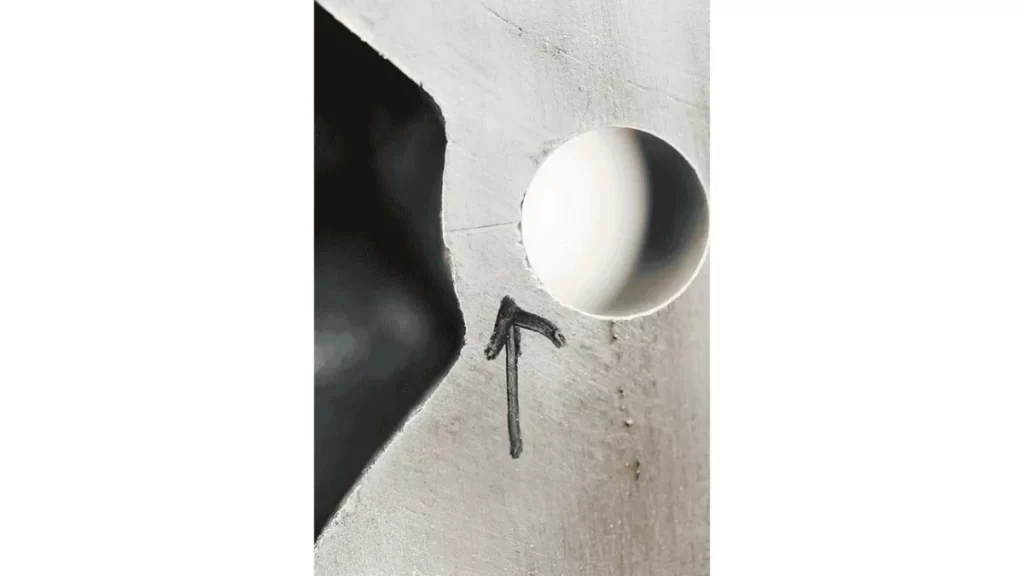
Cracked Cylinder Head
Cast aluminum products are highly strong. Even so, it may not do well when the conditions are very harsh. In very hot places, it may not withstand stress without needing extra help.
Porosity is possible
When aluminum is cast, bubbles in the gas can create holes in the metal. As a result, the metal might not perform well in critical applications due to reduced strength.
An Introduction To Cast Iron
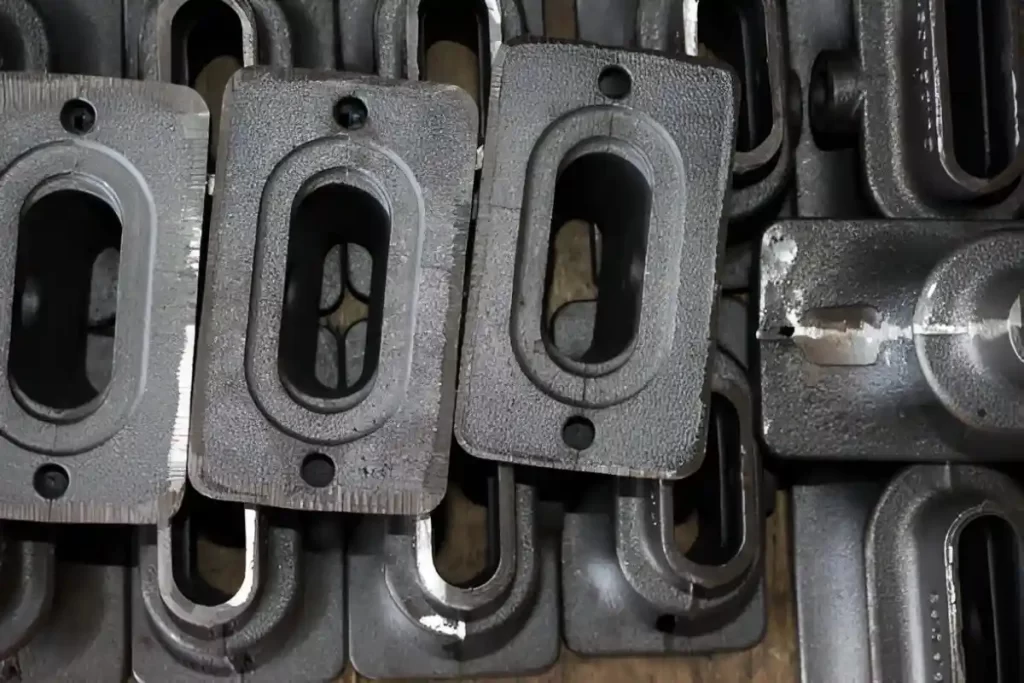
Cast Iron
People have been using cast iron in industry for ages. It is used in buildings, machines, and heavy tools. It is sturdy and capable of holding up to any challenge put in front of it.
Cast iron is formed by merging iron, carbon, silicon, and manganese. Because it has a high carbon percentage, it becomes strong and unique. You can find its extensive use when weight, resistance to friction, and heat resistance are crucial. (Read more about magnesium casting)
How Cast Iron Is Made?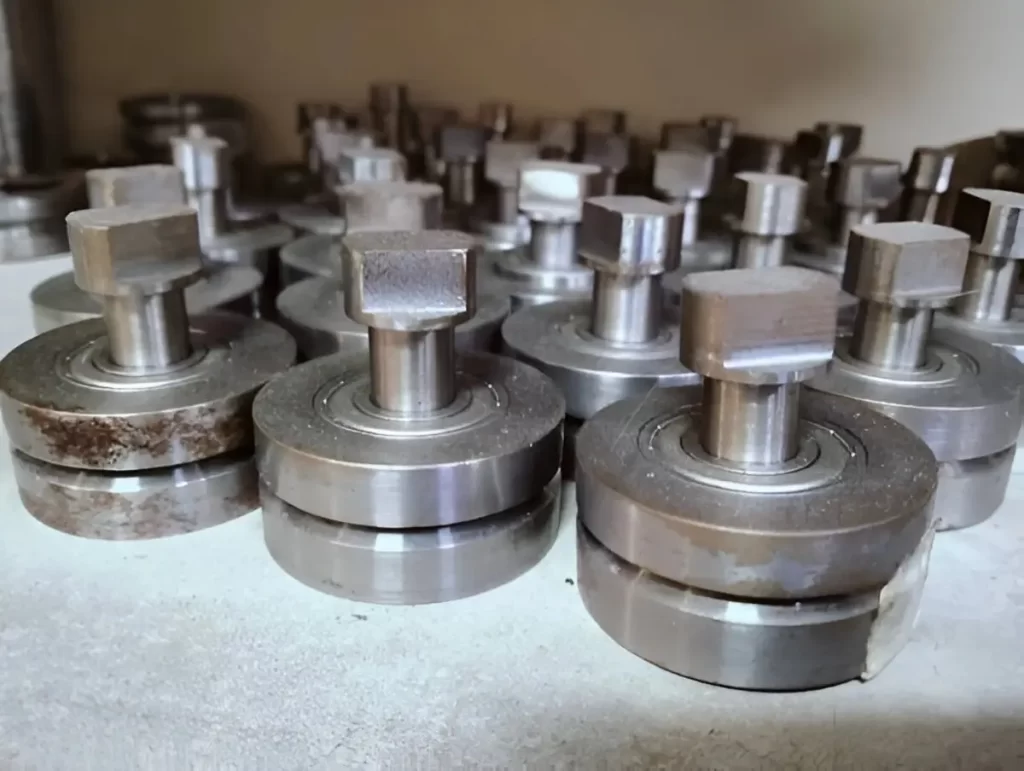
Cast Iron Industrial Machine Bearing
Cast iron is made when it is heated above 1200°C. In the process, it melts to pour into a mold. After the iron is cooled, it becomes a solid object. It is fast, straightforward, and ideal for producing large numbers.
It is simple to form the metal into various strong parts. You can use cast iron molds for building machines and structures alike. When the process is finished, you have a part that will serve you for long-term use.
Try Prolean Now!
Cast Iron Features That Make It Stand Out
Cast iron is a key feature of every home. For example, resisting wear, sound, and shock is tough.
Dampens Vibrations Naturally
Cast iron can absorb more vibrations than other metals. Subsequently, there is less chance of noise, and the machines work better. The dampening effect comes from the graphite flakes found in the tires. In reality, it can reduce vibration 20 times more effectively than steel.
Built to Resist Wear
Cast iron handles are very durable. Abrasion is stopped by the tiny carbides that exist within the steel. For this reason, gears, heavy equipment, and moving parts are usually made from this material.
High Compressive Strength
A cast iron cooker can stand up against high pressure. For this reason, gears are often included in machine bases and construction blocks. Some portions support over 1000 MPa under compression.
Therefore, use cast iron if your product needs to support a heavy weight. It remains strong against all the weight put on it.
Handles Heat Well
Cast iron can heat up without changing its shape. Grey cast iron has a thermal conductivity of around 50 W/m·K. Therefore, it quickly and equally heats a pan.
Heat capacity is also very high in this substance. This allows it to pick up heat without quickly increasing in temperature. Consequently, you’ll notice it used in engine blocks, inside stoves, and cookware.
Easy to Shape and Machine
Even though casting with iron is not easy, it is simple. It is easy to shape because it flows uniformly into the molds. You can also machine the casting after you have made it.
As a result, you can produce items with precise and smooth surfaces. A typical treatment will not require you to do anything extra.
Cast Iron Pros: What Makes It a Strong Option
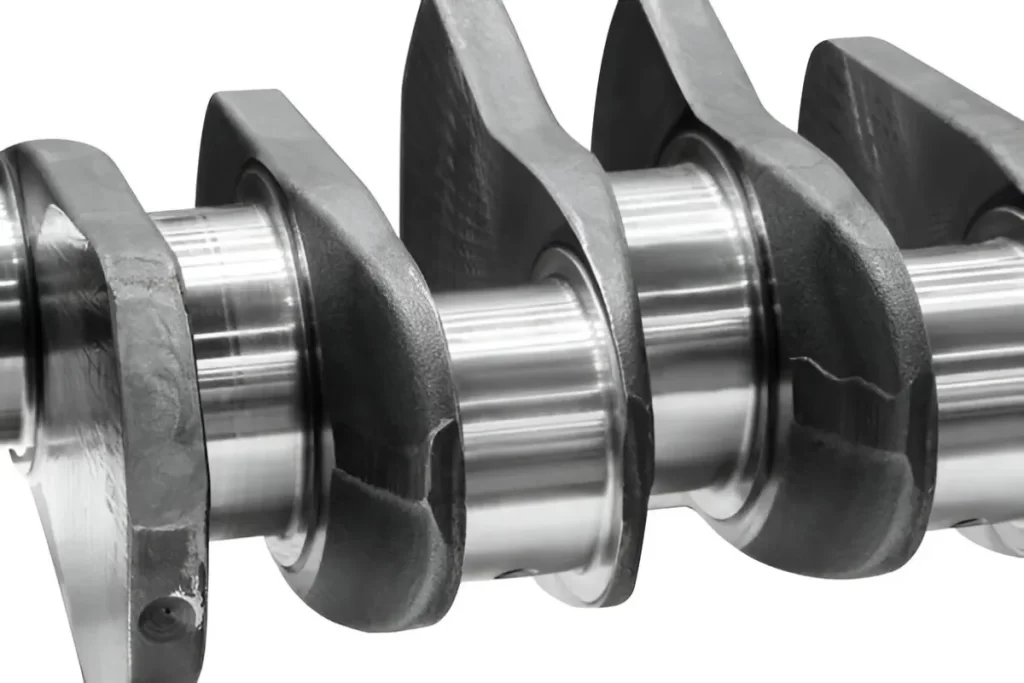
Crankshaft
There are many valuable aspects of cast iron that make it a solid choice for castable products.
Affordable and Easy to Source
Cast iron is formed from easily acquired materials. This allows you to manage the costs of the project.
Fully Recyclable
The material is completely recyclable. It remains strong even if it has been recycled.
Vibration and Sound Damping
It helps to prevent noises and vibrations in big machines. This leads to your equipment functioning smoother and quieter.
Heat Resistant and Stable
A heat pump can be used in hot and cold weather conditions. The structure won’t be affected by heat.
Graphite Acts as a Lubricant
Friction is lowered because of the presence of graphite. This allows the different moving components to work quietly and last longer.
Cast Iron Cons: Where It May Fall Short
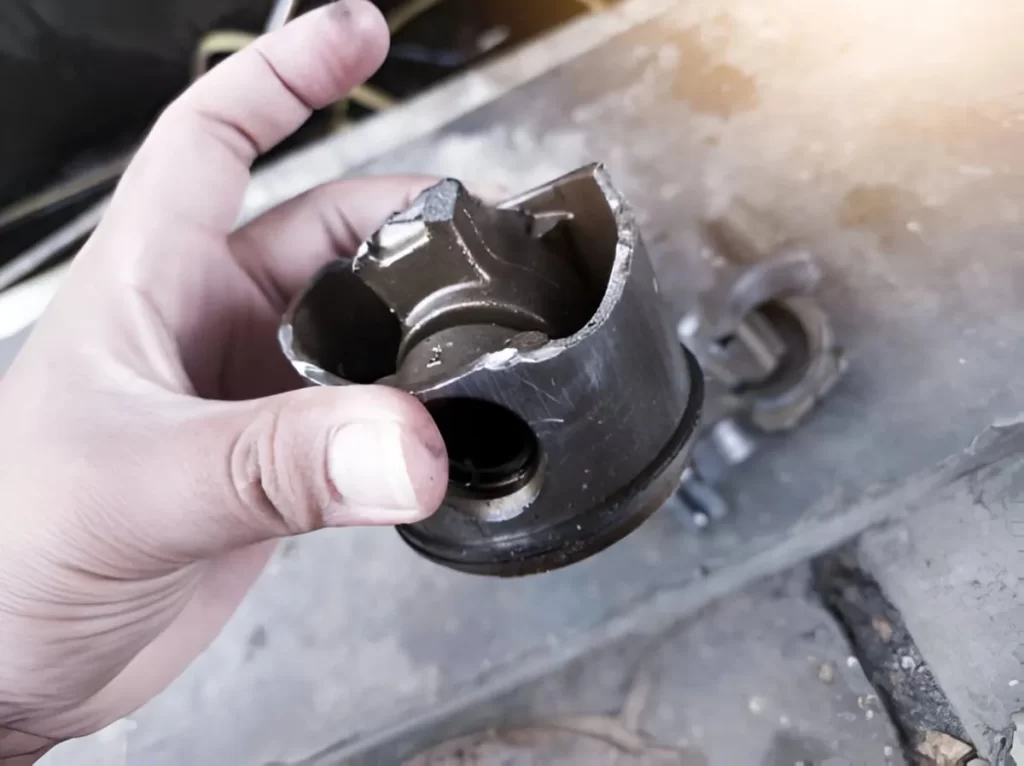
Engine Piston Broke Due to Imperfect Lubrication
Here are common downsides you should keep in mind.
It’s Heavy
A piece of cast iron can weigh as much as 7.2 grams per cubic centimeter. For this reason, the material is heavier than aluminum and steel, and generally close in density to steel, though some types of steel may be heavier.
Anxiously Respond to Stress
If you drop cast iron, it can easily crack due to its stiffness. Bumps and sudden strains might cause it to break.
It Is Not Suitable for Thin Parts
Iron casting is challenging to apply to fine and thin component details. The best use for it is in bold, thick sections.
Can Rust Without Protection
If metal gets wet or salty, it is likely to rust quickly. Sometimes, you’ll have to use coatings and paint to shield it.
More Difficult to Weld
You cannot weld cast iron as easily as steel or aluminum. It can be troublesome and pricey to fix damage to a car.
Cast Aluminum vs. Cast Iron: Seeing the Difference Made Easy
To help decide, let’s differentiate the several aspects.
Cost
When handling a budget, aluminum castings may be costly. Its raw material costs more, and casting it is not always simple. The overall costs could rise quickly when a design is complex. Yet, aluminum can help save money in the future by being lighter, using less fuel, and needing fewer transports.
Cast iron costs less to purchase than stainless steel. The process for creating it is well-known, and the raw material is cheaper. Cast iron will keep your budget affordable when producing many parts or using big pieces.
Applications

Aluminium die casting product
Casting aluminum is helpful when you require light and strong pieces. Many cars, aeroplanes, and electronics use it. This type of metal is beneficial when corrosion resistance and heat are essential factors. Car components made of aluminium, lighter than steel, can make a car stronger and faster.
Cast iron is used in situations where strong and tough materials are required. It is often used in engine blocks, machine bases, and the rotors in your brakes. It is also found in buildings and architecture where the weight is not a concern.
Weight
Aluminum molten casting produces very light items. We use Styrofoam for things that need to be easily moved since it is very lightweight. Because bodums are so light, they are useful in projects where weight is a major concern.
At the same time, cast iron often weighs more than other materials. Since the density for cast iron is 7.2 g/cm³. It is more than twice as dense as aluminum.
Strength and Durability
Cast aluminum is strong for its weight. It has a tensile strength of 130 to 280 MPa. When you apply pressure, the metal may bend without cracking, which is its most significant feature.
Cast iron supplies more raw strength due to compression. Many grades of this material can withstand up to 1000 MPa. As a result, it remains stable when holding heavy things. On the other hand, the material breaks easily if subjected to sudden force.
Thermal Properties
Cast aluminum is the product to consider when heating things quickly. Most metals used in thermocouples can conduct heat very well, at a rate of 120 to 180 W/m·K. That is why heat sinks, radiators, and other fast-heating parts rely on this material.
Cast iron can perform well in heat, though it works differently. Because of its moderate conductivity, it retains heat inside for a longer period. Because the heating is gradual, it’s ideal for anything that requires heat to stay constant.
Corrosion Resistance
Cast aluminium is not easily affected by corrosion. Air causes it to develop a thin layer of oxide. Overall, the material is safeguarded from rust in different environments. You can often avoid using extra coatings, saving you time and money when facing extreme situations.
Even so, cast iron is more likely to become rusty. It doesn’t enjoy the same type of protective coating as aluminum. Where the environment is humid or salty, the structure must be covered with protection. Some consistencies are better at avoiding rust, yet it is still more likely to get rusty.
Vibration Damping
Vibration control should be considered when working with cast iron. These handles resist vibrations very well. Because of its graphite, sound and movements are absorbed naturally. That is why these tools and machines are designed with stability.
Only a small amount of vibration is suppressed with cast aluminum. It can perform some movements, but can’t perform as many as cast iron. You should use additional support and insulation in areas with high vibration.
Electrical Conductivity
Cast aluminum can carry electricity well. You can find it in power lines, housing for electronics, and circuit components. Thanks to its conductivity and light weight, it is often used to make tiny electrical components.
However, some cast irons, especially white cast iron, are abrasive and can cause tool wear during machining.
Machinability
When aluminum is cast and cooled, machine work becomes very easy. While using your tools, the metal will not cause them to wear out quickly. Because of this, fewer steps are needed during the production process.
Cast iron is also easy to machine when stability plays a key role. It is formed well and has beautifully finished surfaces. Still, rocks’ hard and brittle nature can slowly damage many tools.
Ductility and Wear Resistance
Cast aluminum is more flexible than cast iron. It can bend a little before snapping. It may bend slightly under stress rather than crack. This makes it suited for impact-prone applications.
Since cast iron is not very ductile, it has excellent resistance to wear. Many rubbings, pressures, and other stresses do not damage it. You’ll find that using a set of tires made for high friction, they wear out more slowly than an aluminum set.
Cast Aluminum vs. Cast Iron: Key Differences at a Glance
Table: cast iron vs aluminum
| Feature | Cast Aluminum | Cast Iron |
| Material Density | Lightweight (~2.7 g/cm³) | Heavy (~7.2 g/cm³) |
| Tensile Strength | Moderate (130–280 MPa) | Stronger (150–400 MPa) |
| Compressive Strength | Moderate, good for balanced loads | Excellent for heavy-duty loads |
| Heat Transfer | Fast heat dissipation (120–180 W/m·K) | Slower heat transfer (~50 W/m·K) |
| Rust Resistance | Naturally resistant | Needs protection from moisture |
| Machinability | Easy to shape and machine | Durable but tougher on tools |
| Vibration Absorption | Good for moderate vibrations | Excellent at dampening vibrations |
| Electric Conductivity | Good for electrical use | Poor for electrical applications |
| Cost Efficiency | Generally more expensive | More affordable for large runs |
| Weight Consideration | Light, ideal for transport | Heavy, stable for fixed applications |
| Flexibility | Can bend under pressure | Brittle, breaks under tension |
| Wear Resistance | Fair wear resistance | Exceptional wear resistance |
Conclusion
As you’ve seen, cast aluminum and cast iron provide distinct advantages and limitations. Your decision between these materials will primarily depend on the unique needs of your project.
Prolean Tech not only helps you appropriately choose the material, but our capabilities help you provide premium machining, regardless of material. Cast aluminum is ideal for projects requiring lightweight design, excellent corrosion resistance, and efficient thermal management. Conversely, cast iron is a strong choice for applications requiring high compressive strength, wear resistance, and superior vibration damping.
At Prolean Tech, we are committed to providing the best die casting service, the right material solutions to meet your manufacturing needs.
FAQ’s
Q1: What is made of cast iron?
Cast iron is used in various products like engine blocks, pipes, brake rotors, cookware, and machine bases. It’s also found in architectural features like benches and maintenance hole covers.
Q2: Is cast aluminum as safe as cast iron?
Yes, cast aluminum is as safe as cast iron for most applications. However, it may not handle extreme stresses the same as cast iron. So the choice depends on the specific use case.
Q3: What are the disadvantages of cast aluminum?
Cast aluminum can be more expensive, especially for intricate designs. It’s also not as durable under high-stress conditions. So, it can be prone to cracking under high impact.
Q4: What is the difference between cast iron and cast aluminum furniture?
Cast iron furniture is heavier and more durable. This makes it ideal for outdoor settings where stability is essential. On the other hand, cast aluminium furniture is lighter, corrosion-resistant, and easier to move.

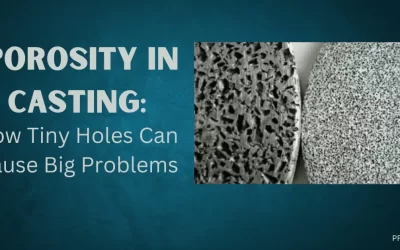
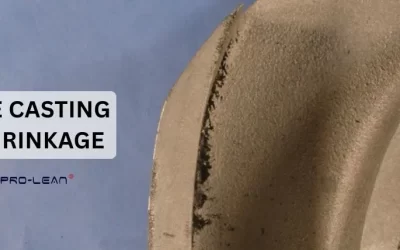
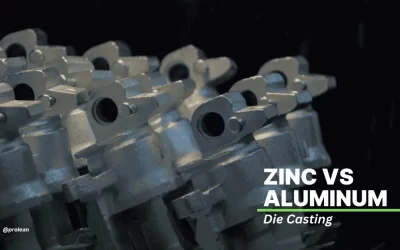
0 Comments